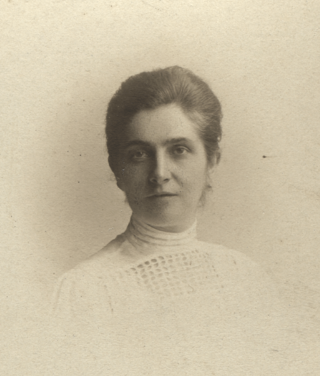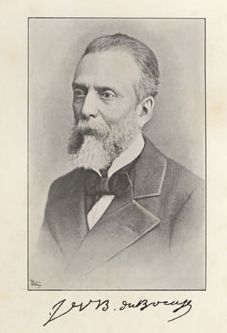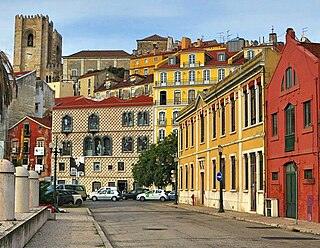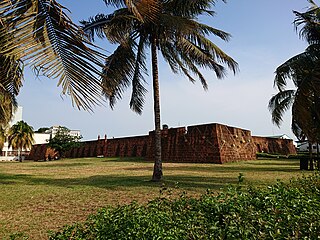Contents
This is a list of museums in Mozambique .
This is a list of museums in Mozambique .

The Museu Paraense Emílio Goeldi, commonly shortened MPEG, is a Brazilian research institution and museum located in the city of Belém, state of Pará, Brazil. It was founded in 1866 by Domingos Soares Ferreira Penna as the Pará Museum of Natural History and Ethnography, and was later named in honor of Swiss naturalist Émil August Goeldi, who reorganized the institution and was its director from 1894 to 1905. It is now the "main research center on natural systems and sociocultural processes of the Brazilian Amazon." The museum and zoological park are listed as protected sites by both the National Institute of Historic and Artistic Heritage, and the Department of Historic, Artistic and Cultural Heritage of the state of Pará.

Maria Emilie Snethlage was a German-born Brazilian naturalist and ornithologist who worked on the bird fauna of the Amazon. Snethlage collected in Brazil from 1905 until her death. She was the director of the Museu Paraense Emílio Goeldi from 1914 to 1922. Several species of birds were described by her.

The National Museum of Brazil is the oldest scientific institution of Brazil. It is located in the city of Rio de Janeiro, where it is installed in the Paço de São Cristóvão, which is inside the Quinta da Boa Vista. The main building was originally the residence of the House of Braganza in colonial Brazil, as the Portuguese royal family between 1808 and 1821 and then as the Brazilian imperial family between 1822 and 1889. After the monarchy was deposed, it hosted the Republican Constituent Assembly from 1889 to 1891 before being assigned to the use of the museum in 1892. The building was listed as Brazilian National Heritage in 1938 and was largely destroyed by a fire in 2018.

José Vicente Barbosa du Bocage was a Portuguese zoologist, politician, and professor. He served as a professor of zoology and director of the National Museum of Natural History and Science at the Polytechnic Institute of Lisbon, where he played a role in the development of Portuguese zoological collections and research. Bocage’s scientific work led to the description of numerous species, particularly of Portuguese and African fauna, and he published extensively on taxonomy, advancing zoological knowledge in Portugal and its overseas territories.

The Museu Nacional de Arte Antiga, also known in English as the National Museum of Ancient Art, is a Portuguese national art museum located in Lisbon. With over 40,000 items spanning a vast collection of painting, sculpture, goldware, furniture, textiles, ceramics, and prints, MNAA is one of the most visited museums in Portugal.

The National Historical Museum of Brazil was created in 1922, and possesses over 287,000 items, including the largest numismatic collection of Latin America. The architectural complex that houses the museum was built in 1603 as the St. James of Mercy Fort; earlier structures date back to 1567, erected by order of King Sebastian I of Portugal. In 1693, the Calaboose Prison, for slaves, was built. In 1762, the Casa do Trem was added as a depot of weapons and ammunition. The last additions are the War Arsenal (1764) and the Barracks (1835).
Cristóvão de Figueiredo was a Portuguese Renaissance painter.

The National Museum of Archaeology is the largest archaeological museum in Portugal and one of the most important museums devoted to ancient art found in the Iberian Peninsula. Located in Lisbon, the museum was founded in 1893 by the archaeologist José Leite de Vasconcelos. The museum is located in the western wing of the Jeronimos Monastery where the monks had their dormitory. The museum is built in the Neo-Manueline style and was officially opened in 1906.

Paço de São Cristóvão was an imperial palace located in the Quinta da Boa Vista park in the Imperial Neighbourhood of São Cristóvão, Rio de Janeiro, Brazil. It served as residence to the Portuguese royal family and later to the Brazilian imperial family until 1889, when the country became a republic through a coup d'état deposing Emperor Pedro II. The palace briefly served as a public building by the provisional government for the constituent assembly of the first republican constitution. It housed the major part (92.5%) of the collections of the National Museum of Brazil, which, together with the building, were largely destroyed by a fire on 2 September 2018.
The Sintra Natural History Museum is a museum of natural history located in the historic center of the village of Sintra. The museum has both at national and international level due to the quality and rarity of many of its exhibits.

Alberto Mabungulane Chissano was a Mozambican sculptor best known for his work using indigenous woods, and sculptures in rock, stone and iron. He is considered to be one of Mozambique's most important and influential artists, together with the painter Malangatana Ngwenya.

The Museu da Música is a museum in Lisbon, Portugal. The museum primarily features musical instruments; among its holdings is a 1725 Stradivarius cello once owned and played by King Luís I of Portugal (ruled 1861–1889.

Lisbon is one of the most popular city destinations in Europe. The city of Lisbon and the Lisbon metropolitan area attracts a significant number of tourists each year, drawn to its historical and cultural heritage, good transportation connections and good touristic infrastructure.

The Museum of Portuguese Music is a small museum housed in the Casa Verdades de Faria in Estoril, municipality of Cascais, Portugal, on the Portuguese Riviera. It contains a collection of Portuguese musical instruments and other items, as well as a music documentation centre, and is also used for recitals.

The National Museum of Brazil was heavily damaged by a large fire which began about 19:30 local time on 2 September 2018. Although some items were saved, it is believed that 92.5% of its archive of 20 million items was destroyed in the fire as around 1.5 million items were stored in a separate building and were not damaged.

The Fort Nossa Senhora da Conceição of Lourenço Marques, nowadays known as the Maputo Fortress is located at Praça 25 de Junho and represents one of the main historical monuments of the city of Maputo, former Lourenço Marques, in Mozambique.